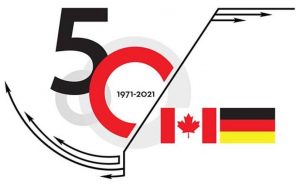Chronic kidney disease represents a high burden on both the individual patient and health care system. One of the goals of applying Artificial Intelligence (AI) algorithms to kidney transplant data is to identify patient-specific risks as early as possible to prevent them. Therefore, historic transplant data from multiple centers are used to develop Clinical Prediction Models (CPM). The use of our NephroCAGE Federated Learning Infrastructure (FLI) enables a privacy-preserving way to train CPMs in multiple centers.
Thanks to the contributing experts from our partners for their input for this article: Dr. Héloïse Cardinal (CHUM), Dr. Ruth Sapir-Pichhadze (MUHC), Pascal St-Onge (CHUM), Dr. Michaël Chassé (CHUM), and Dr. Matthieu-P. Schapranow (HPI). Photo by National Cancer Institute
Prevention of complications after kidney transplantation
Following transplantation, kidney transplant recipients are at an increased risk of complications that can result in graft dysfunction or, in the worst case, premature graft loss or patient death. Graft rejection is the leading cause for premature graft loss and is typically described in two forms. The first, Acute Cellular Rejection (ACR) typically occurs within weeks or months post-transplant. Powerful early immune suppression has reduced the incidence of ACR in the first year from 80 to ten percent of patients. Although most of these events are mild and easily reversed, they may trigger long-term injury. The second, Antibody-Mediated Rejection (AMR) remains the more serious and destructive form. It may occur early or late in the transplant course and presentation may range from the less common acute AMR with rapid and fulminant graft injury to the more common chronic AMR with progressive graft destruction. The management of kidney transplant recipients is complex, given to prevent organ rejection, there is a need to administer immunosuppression. Yet, the strength of the immunosuppressive regimen must be balanced with the risk of complications secondary to this treatment, which can lead to infections or cancer. Hence, there is a need for individualized management of kidney transplant recipients based on their individual risk for developing complications under immunosuppression, e.g. infectious, graft rejection, over-immunosuppression. Nowadays, clinicians reach high standards to regulate the dose of immunosuppression to avoid these complications.
The need for clinical prediction models in kidney transplantation
Individualized management of immunosuppression can be assisted through the development of CPMs that support clinicians by providing a patient-specific risk score of selected clinical outcomes, e.g. rejection (ACR and/or AMR), graft failure, death. While CPMs using standard statistical approaches such as Cox regression have been developed to predict risk for kidney graft failure, they are infrequently refit on new data to ensure that they are still relevant over time or in external cohorts after their initial development. Furthermore, the underlying dataset often originates from registries, which provide only access to a certain subset of clinically relevant variables, but lack important post-transplant variables such as the development of rejection, lesions on kidney graft biopsies, new donor-specific antibodies and molecular compatibility between donor and recipients. Machine learning models have also been developed in the field of transplantation. In case of a small dataset with few features, a machine learning model will show similar accuracy to those using standard statistics. The key point to build more advanced machine learning models with higher performance is to have access to a large high-quality dataset for training.
Federated learning and automatic data collection lead to better development of clinical prediction models
We have established the NephroCAGE Federated Learning Infrastructure (FLI) at each center as mandated by each respective jurisdiction, while remaining amenable to analysis and contribution to knowledge from aggregated data. Our NephroCAGE FLI builds the foundation for local re-training and exchange of CPMs. Once a new CPM is ready for use, it will be exchanged via the NephroCAGE FLI with all clinical sites in a distributed manner. As a result, individual clinical sites can make use of the CPMs functionality via a RESTful API, which enables transparent integration in existing clinical systems.
At our consortium partners Centre Hospitalier de l’Université de Montréal and McGill University Health Center expertise in using federated learning was already acquired in context of the CODA project, which provides a privacy-first open-source platform for distributed analysis of healthcare data. This platform includes data extraction (de-identification and standardization), storage engine of de-identified data in Fast Healthcare Interoperable Resources (FHIR) format, and a computing node equipped with GPUs to perform intensive tasks such as ML Algorithms and capable of using complex data (e.g. imaging). We will use this infrastructure with minor adaptation to analyze the Quebec part of the NephroCAGE dataset. Furthermore, we will supplement automatic data extraction to the CODA data flow, enjoying the advent of close to real-time automated data extraction procedures. Both development phases require expertise in extraction of healthcare data, data standardization, and programming skills to adapt the CODA platform to be compatibility with the NephroCAGE FLI and its CPMs.
The NephroCAGE consortium
The German-Canadian consortium NephroCAGE aims to combine medical and scientific-technical expertise from Germany and Canada. Collaboratively, we will develop a real-world demonstrator for use of CPMs in kidney transplant to evaluate the added value of AI in this field. The knowledge and experience acquired with the applications of a FLI is expected to facilitate the development of CPMs, validate them using multiple datasets through a privacy-cognizant approach, and allow researchers to continue learning and re-fitting these models as time progresses. Importantly, the results of our project will be translatable and advantageous in many medical contexts, potentially having a significant social impact, revolutionizing collaborations with scientific partners worldwide, and facilitating distributed learning for the benefit of patients in kidney transplant.




Comments are closed